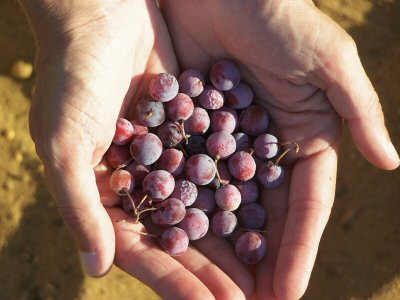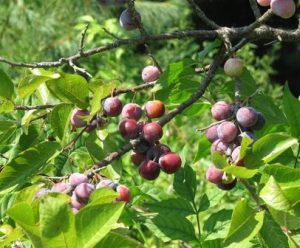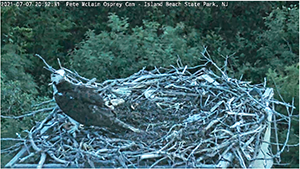This is the fourth installment of a column called “Science of the Shore,” written by Bianca Charbonneau, Phd candidate. Have a science question you would like answered? Email Bianca at [email protected]
When you think of coastal NJ fruits, I bet blueberries and cranberries are what come to mind. However, there is a third delicious fruit that gets much less attention that also thrives in our well drained, low nutrient, and acidic sandy coastal soils – beach plums (Prunus maritima).
Beach plum plants vary from year to year and place to place in terms of fruit size, appearance, and harvest haul, but they’re always delicious!
Beach Plums taste like a mix of strawberry, plum, and apricot with a tart skin. In fact, making beach plum jelly is a cultural past-time of the NJ shore. ‘True’ NJ shore locals know where to go to pick wild beach plums, but they will not divulge the location of their secret spots! The Friends of Island Beach State Park volunteers make jelly every year that can be purchased at the annual Beach Plum Festival festival.
Beach plum plants are shrubs that grow in a tree-like or low bushy form that can be found on natural coastal dunes. Their roots spread well both vertically and horizontally in low clay-content soils, and laterally, the roots can extend relatively far from the main trunk. As a result, they play a secondary role in stabilizing sand and giving coastal dunes the structure that they need to combat erosion during storms.
Efforts are underway to cultivate beach plums both as crops and to be planted to stabilize dunes like we plant American Beachgrass (Ammophila breviligulata). They tend to be 4-7 feet in height on dunes, but can reach heights of 16-18 ft if planted inland. On the dunes, salt spray, nutrient availability, shifting soil, and competition with other plants limiting their growth, but beach plums will grow in any well-drained high nutrient soil with full sunlight; talk to your local nursery about attaining a seedling! They can reach widths of 10-20 feet with many vertical woody shoots growing from the roots.
The fruit of the beach plum is the hidden treasure of the dunes! In April and May snow white colored flowers emerge before the leaves of beach plum plants do after winter. After the flowers are pollinated, by wind or bees, they turn pink-like and a beach plum fruit begins to develop. The fruit will ripen throughout the summer until they are ready to pick and eat August through September. When fully ripe, they look like miniature plums, ranging from 0.5-1 inch in diameter and coloration varies from a purplish-black-blue to red-yellow.
Beach plums, like many plants, used to be more prevalent in the past, than they are today; in 1609, Henry Hudson reported seeing an abundance of little blue plums, along the banks of the Hudson River. Today, you will not find beach plums along the Hudson, but they can still be found in the US from Massachusetts down to Virginia in undeveloped coastal dune areas. In fact, beach plums can be found growing at Island Beach State Park. However, remember to keep off the dunes!
If you want to look for beach plums, simply look to the left of start of the boardwalk at A2 and come to the Beach Plum Festival to get some beach plum jelly!





